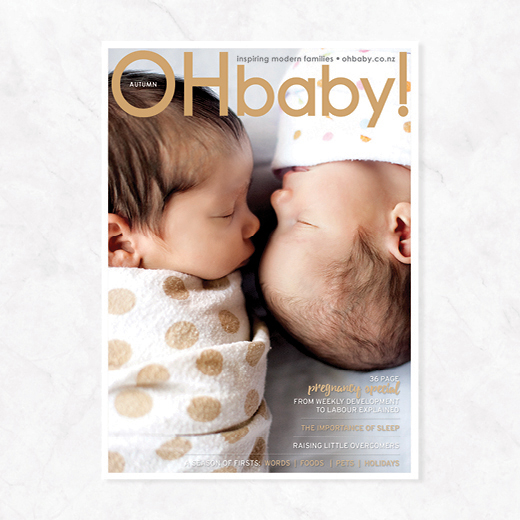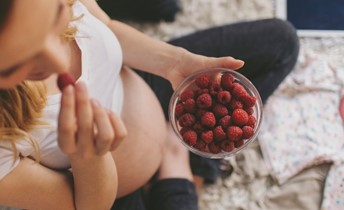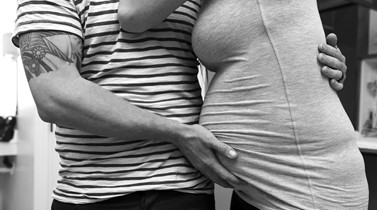Solid advice: best first foods for baby

Starting solids can serve up a smorgasbord of questions. Nutritionist and mum-of-two Laura Anderson shares her tips regarding the best first foods for baby, and when to offer them.
So you’re entering another new stage of parenthood – the introduction of solid food. Although this is an exciting time, and it’s great to see your child developing, this stage can bring concerns – what’s the right food and what’s the right timing? Food is obviously a big part of your child’s life. When it comes to our children’s diet, the acceptance of many different types of nutritious foods would be our ultimate goal as parents. However, to take the pressure off, keep in mind that breast milk or formula is still the main source of nutrition for your baby up till their first birthday.
Ready, set, go!
Like everything in child development, the timing will be different for every baby, but in general your child will start to display signs they are ready to try solid food at about six months of age. Around this age, your baby may show you some of the following common signs of readiness:
■ An increased interest in the food you’re eating and wanting to be a part of mealtimes
■ The ability to hold their head steady and sit up without a lot of help
■ Showing good hand-to-eye coordination so that their mouth opens easily when food is brought to it, either by their own hands or your spoon
■ The ability to keep food in their mouth without their tongue pushing the food back out
■ A sudden increase in appetite for breast milk or formula
The right stuff
At six months of age and onwards, your baby will start to require some extra nutrients, in particular zinc and iron, and the introduction of solids will help provide these. Initially, however, starting first foods is not about quantity; it’s about quality and a widening variety. The purpose of first foods is to not only help with those extra nutrients, but it’s also about exploration, discovery, development and a lot of mess! Trust me; you will never know mess until you experience your first child trying solid food for the first time!
Many different health authorities give recommendations on the right first foods to introduce. What is reassuring to know is that the foods recommended are consistent across all guidelines. The New Zealand Ministry of Health have developed Food and Nutrition Guidelines for Infants and Toddlers 0–2 years, and have produced a list of foods suitable for the beginning of the ‘starting solids’ journey (see over). As expected, more foods are added to this list as your child gains experience and their tastes develop.
Dining à la carte
It’s all about new tastes and soft textures at this stage, therefore it is helpful in the long term to introduce your baby to as many of the recommended first foods as you can. It’s important to remember that food preferences and tastes will vary from family to family, so serve what suits you and your baby, whether you keep baby's food bland so as to not overwhelm, or add spices to get your child familiar with the flavours from day one.
To ensure that these first foods are nutritious, safe and age-appropriate, there are a few guidelines that are important to follow:
■ There is no particular order needed to introduce first foods once your baby is six months old. Some parents prefer not to start with fruit as they’re worried a sweet tooth will develop, but this won’t be the case. Your baby will be used to sweet flavours already, from breast milk or formula, but they will get used to other new flavours if they are offered them early enough.
■ Adding salt, sugar or honey is not recommended. Let your baby get familiar with the taste of the actual food. Any additional flavour can be added with spices, if required.
■ When preparing fruit and vegetables, remove all pips, seeds, stones and skin, as these can be a choking hazard.
■ Avoid salted meat, such as corned beef, and tinned fish, such as tuna.
■ Be careful not to undercook meat, beans and pulses.
■ Try not to overcook fruit and vegetables, so as to retain as much of the natural goodness as possible. Steaming is better than boiling in this regard.

Getting started
Once you’ve prepared your baby’s first food, the next (and often hardest) step is to actually feed it to your baby. Don’t worry too much about specific mealtimes, choose a time of the day when your baby is relaxed and happy, and always provide them with breast milk or formula first. (Once your baby is older than eight months, solid foods can be offered before milk.) You can either sit your baby in a highchair, if they’re comfortable and safe, or on your lap.
It’s generally recommended to try one new food every two to four days, and don’t be put off if food is rejected the first time. One option is to try mixing a new food with another food you know your baby does like, or just leave it for now and come back to that food at a later date. A common rule is that a baby may need to taste a food ten times before they accept it. When you first introduce a new food, just offer one or two teaspoons, and gradually increase the amount over time. You may find your baby loves this new stage and wants more – just go with the flow! Or maybe they’re not enjoying it, in which case they’ll let you know. That’s also fine, just go slow. Give your baby the spoon to suck on so they can just taste the food. Let baby play with some finger food, which they may or may not bring to their mouth to taste. At this stage, every experience with food matters.
Puree versus finger food
Like many things related to babies these days, there can be a bit of information overload regarding starting solids. This, combined with potentially conflicting theories, can be very confusing at times. Traditionally first foods were pureed and spoon-fed by the parent. Over time lumps and textures were added until babies were eating more solid foods and eventually feeding themselves. Since the introduction of baby-led weaning, many parents have changed how they introduce foods, with a focus more on the experience, eating the same as the rest of the family, and letting the baby control what they decide to eat by feeding themselves.
What’s important to remember is that there is no one way to introduce first foods – it will be different for every child and every family. What’s best is whatever works for you and your child. Your baby may just love being fed with a spoon and prefer the smooth textures, or they may be fiercely independent and want to only feed themselves. Alternatively, they may be like my babies and enjoy a bit of everything, so were given both purees and finger foods from day one. The great thing is there is a wide range of food options to suit all sorts of first food preferences, with both feeding methods being nutritious and safe when the food is prepared correctly.
Laura Anderson is a nutritionist with two young children. She takes a practical approach to parenting and food, and is passionate about helping parents feel encouraged and empowered when it comes to their children’s diets.

AS FEATURED IN ISSUE 37 OF OHbaby! MAGAZINE. CHECK OUT OTHER ARTICLES IN THIS ISSUE BELOW

















